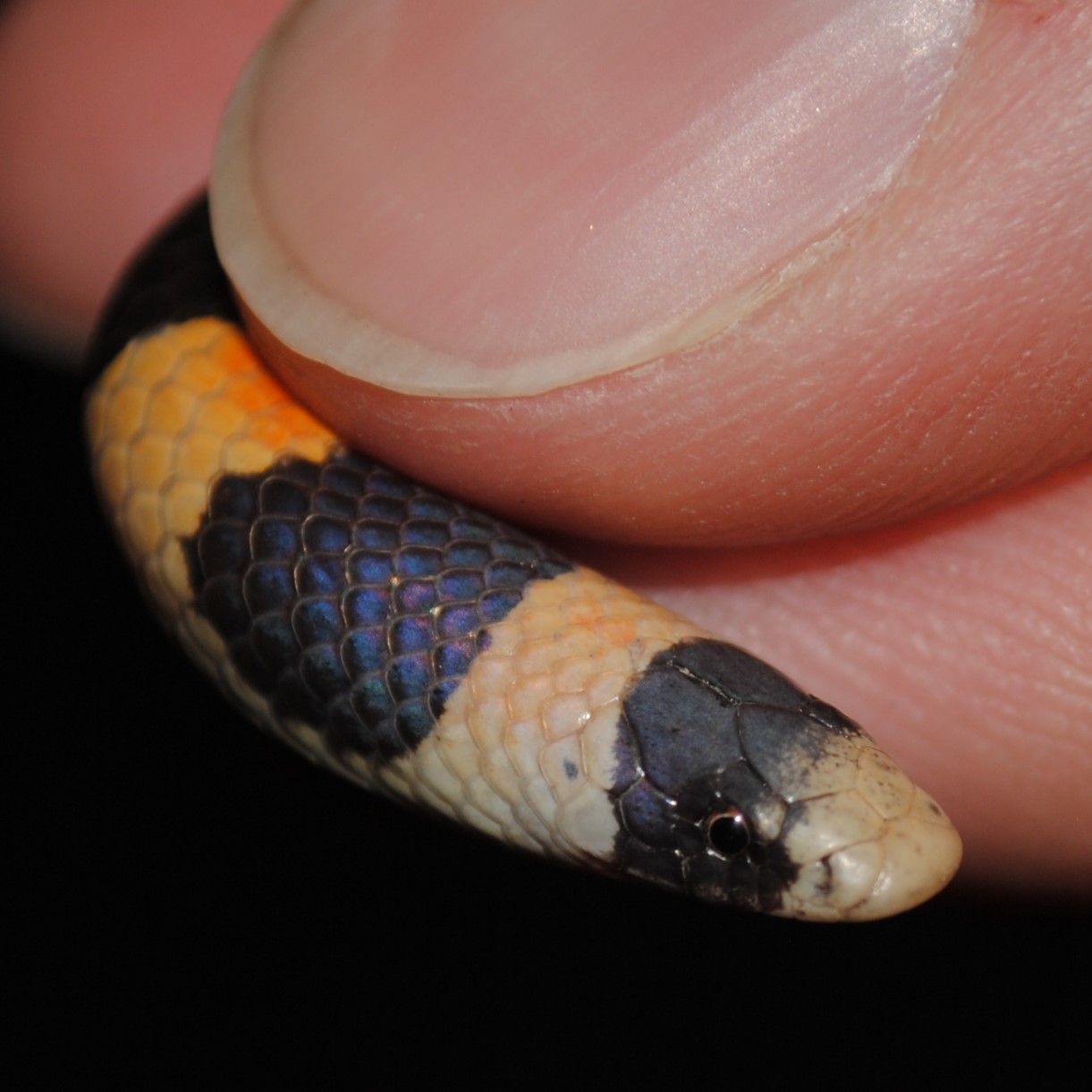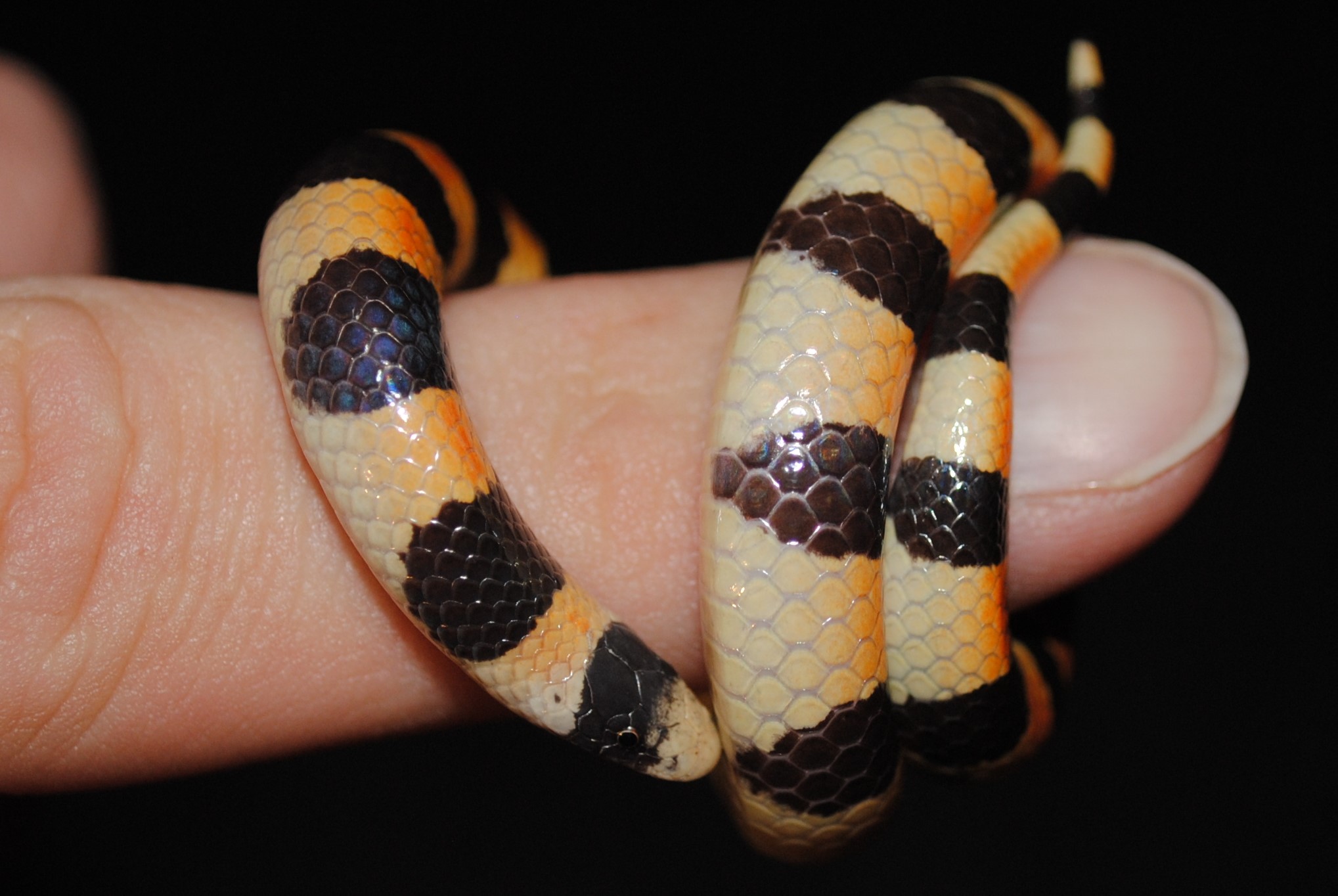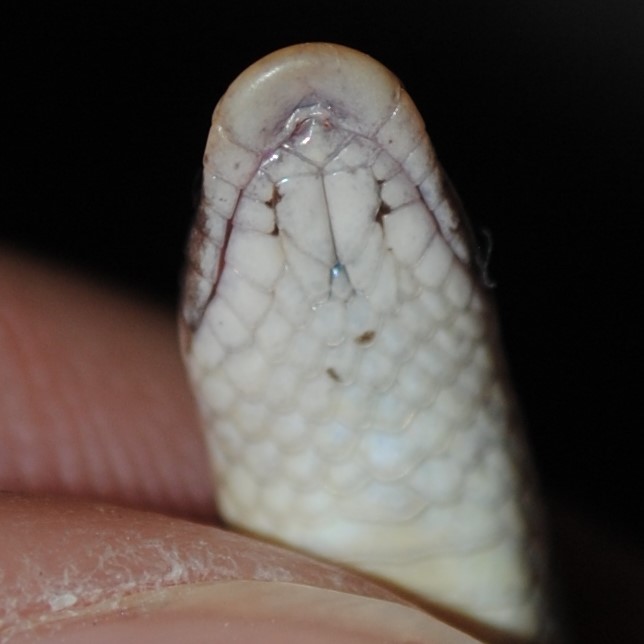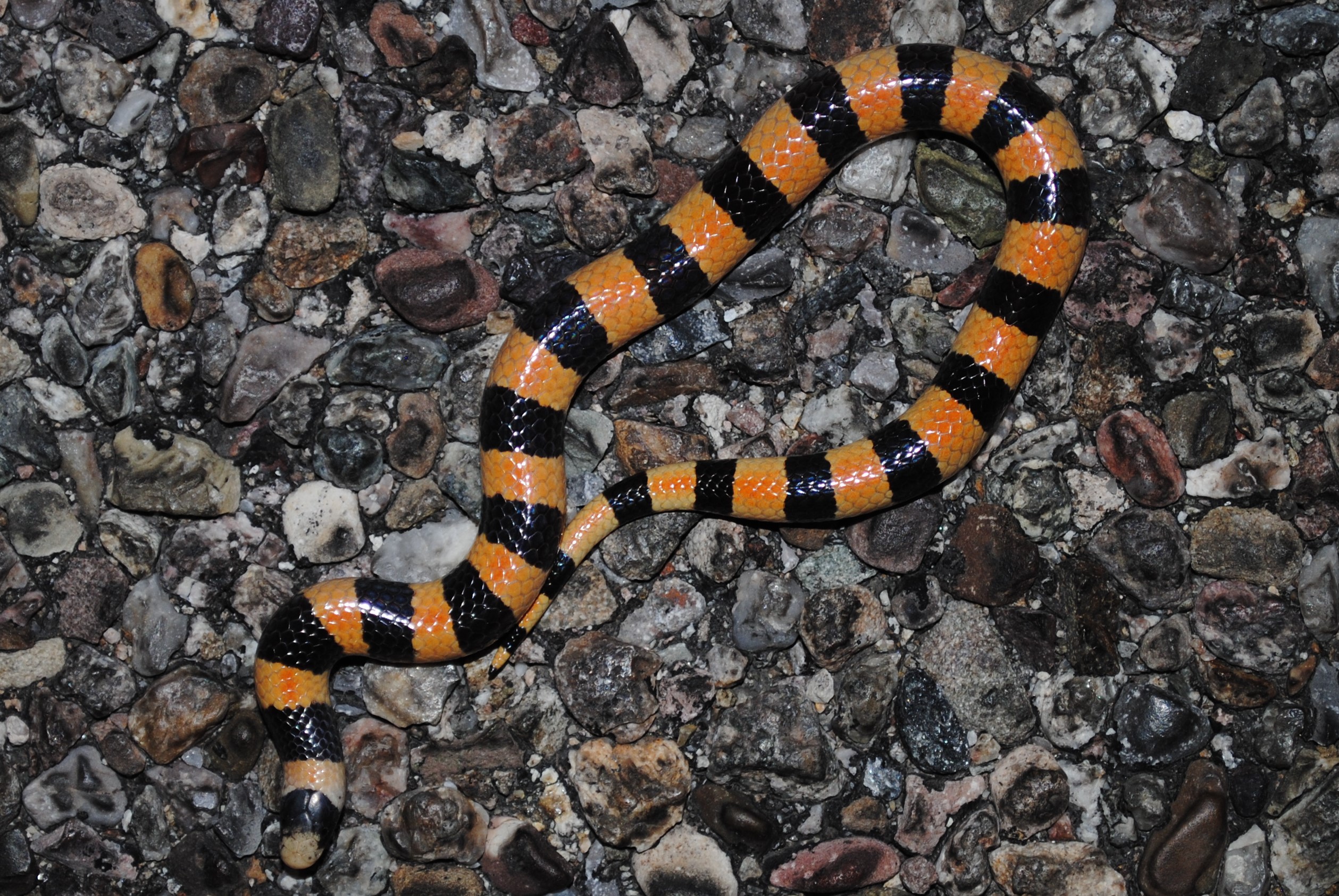Variable sandsnake (Chilomeniscus stramineus)

The variable sandsnake (Chilomeniscus stramineus) is a highly efficient burrower, often referred to as a "sand swimmer" due to its remarkable adaptations for life beneath the surface. In terms of appearance, the variable sandsnake is small, with a stout body measuring up to 11 inches (285 mm) in total length. Its burrowing adaptations are more extreme than those of shovel-nosed snakes. Adaptations for burrowing include small eyes facing upwards, valves in the nasal passages, a flat and wedge-like snout, a head no wider than its neck, a counter sunk lower jaw, a concave belly, resulting in angular features on each side and smooth, shiny scales. Its skin has a varnished appearance, and it exhibits two color morphs: plain-colored (unbanded) and banded, with the latter having a total number of dorsal crossbands varying from 19 to 49. It features dark brown or black saddles on an orange dorsum, with the dorsal coloration grading into cream on the lower sides. The black bands usually encircle the tail completely, while the belly is pale cream with no markings.

Its behavior is primarily nocturnal and crepuscular, and it hibernates during the colder months of late fall and winter. This species is an excellent burrower, often observed with only its head exposed at dusk, blending seamlessly with the sandy background. Sandsnakes create serpentine furrows in sandy areas among bushes as they burrow near the surface, leaving characteristic signs of their presence.
The variable sandsnake can be found in arid regions, particularly in fine to coarse sand or loamy soil, where it adeptly navigates by "swimming" through the sand. It rarely emerges on the surface except at night, favoring habitats such as open desert, sandy-gravel washes, and rocky uplands. environments.

During reproduction, mating likely occurs in spring, with females laying clutches of up to four eggs in the summer months. The diet of the variable sandsnake consists primarily of insects such as centipedes, sand-burrowing cockroaches, and grasshoppers.
The variable sandsnake's distribution spans central and southwestern Arizona, extending into southern Sonora and throughout Baja California, including isolated populations in the southwestern portion of Arizona. It inhabits elevations ranging from sea level to 3,000 feet.
References:
Stebbins, R. C., & McGinnis, S. M. (2018). Peterson Field Guide to Western Reptiles & Amphibians, Fourth Edition. Houghton Mifflin.
Brennan, T. C. (n.d.). Variable sandsnake. The reptiles and amphibians of Arizona. https://reptilesofaz.org/snakes-subpages/h-c-stramineus/


